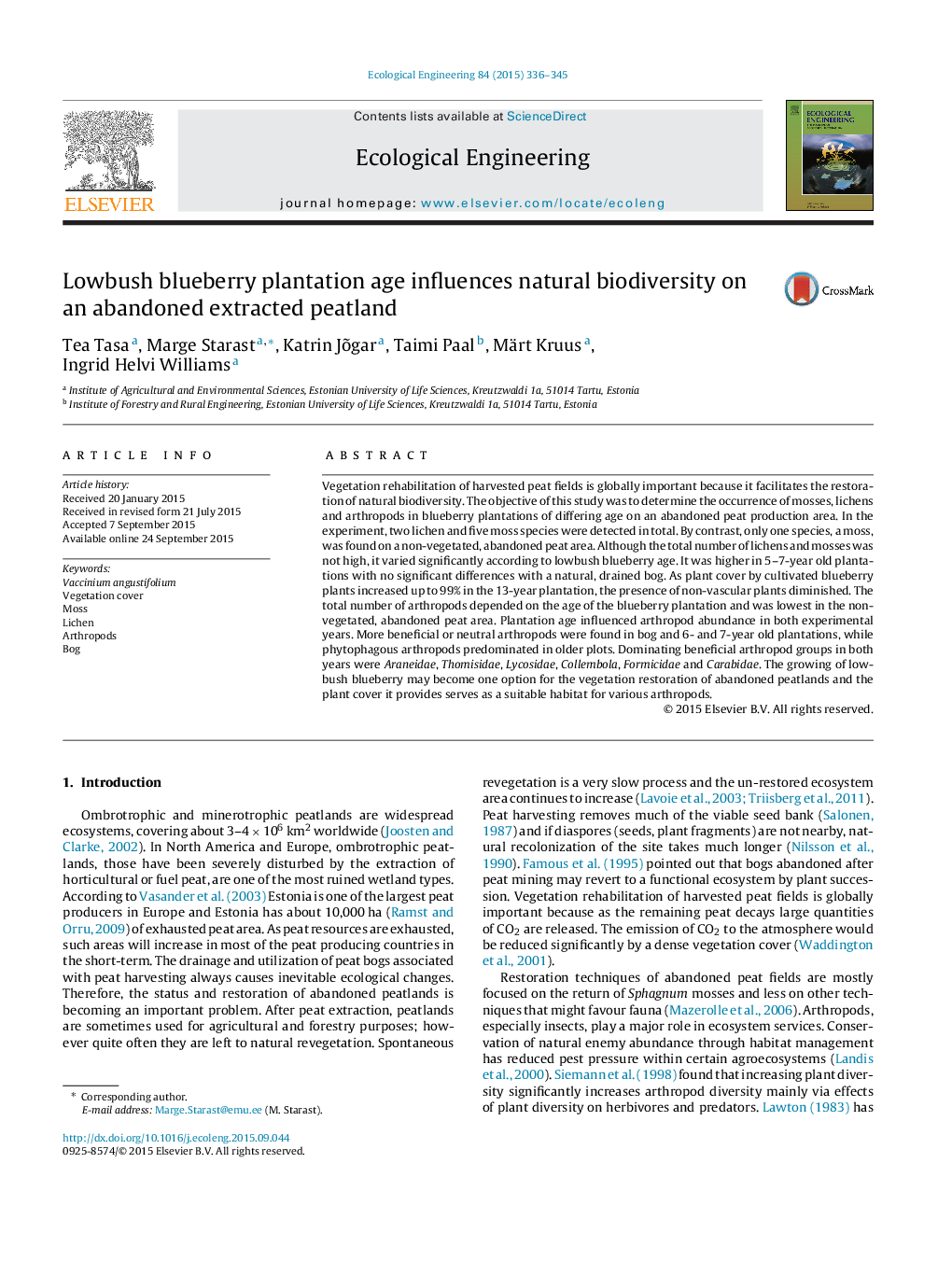| کد مقاله | کد نشریه | سال انتشار | مقاله انگلیسی | نسخه تمام متن |
|---|---|---|---|---|
| 4388800 | 1618015 | 2015 | 10 صفحه PDF | دانلود رایگان |

• Blueberry cultivation helps renew species and trophic diversity in abandoned peatland.
• Blueberry plantation age influenced significantly abundance of lichens and mosses.
• Arthropod abundance correlated positively with blueberry plantation age.
• In blueberry plantation species richness resembles that in a natural bog.
• Natural biodiversity was lowest on a bare, non-vegetated peat area.
Vegetation rehabilitation of harvested peat fields is globally important because it facilitates the restoration of natural biodiversity. The objective of this study was to determine the occurrence of mosses, lichens and arthropods in blueberry plantations of differing age on an abandoned peat production area. In the experiment, two lichen and five moss species were detected in total. By contrast, only one species, a moss, was found on a non-vegetated, abandoned peat area. Although the total number of lichens and mosses was not high, it varied significantly according to lowbush blueberry age. It was higher in 5–7-year old plantations with no significant differences with a natural, drained bog. As plant cover by cultivated blueberry plants increased up to 99% in the 13-year plantation, the presence of non-vascular plants diminished. The total number of arthropods depended on the age of the blueberry plantation and was lowest in the non-vegetated, abandoned peat area. Plantation age influenced arthropod abundance in both experimental years. More beneficial or neutral arthropods were found in bog and 6- and 7-year old plantations, while phytophagous arthropods predominated in older plots. Dominating beneficial arthropod groups in both years were Araneidae, Thomisidae, Lycosidae, Collembola, Formicidae and Carabidae. The growing of lowbush blueberry may become one option for the vegetation restoration of abandoned peatlands and the plant cover it provides serves as a suitable habitat for various arthropods.
Journal: Ecological Engineering - Volume 84, November 2015, Pages 336–345